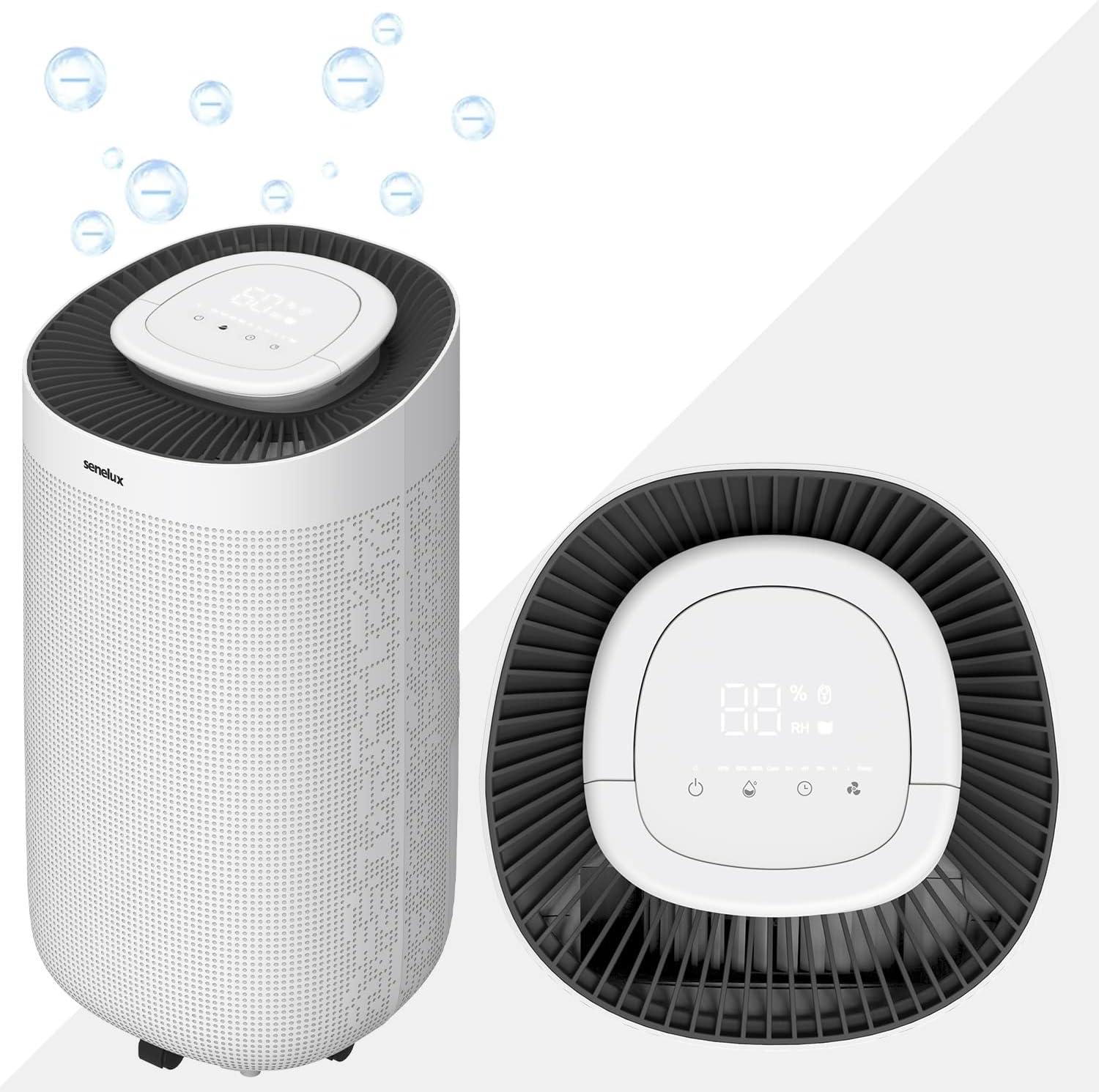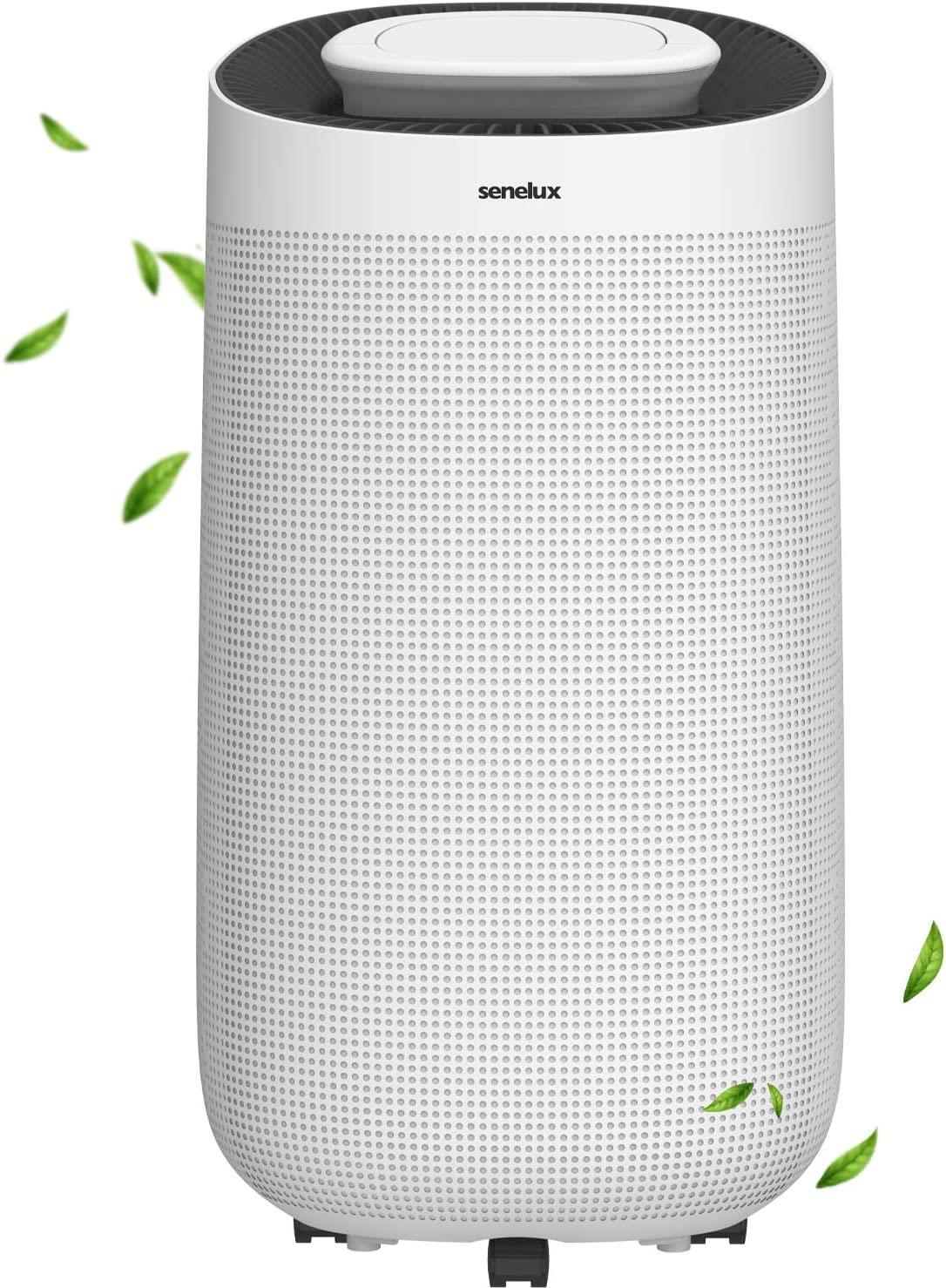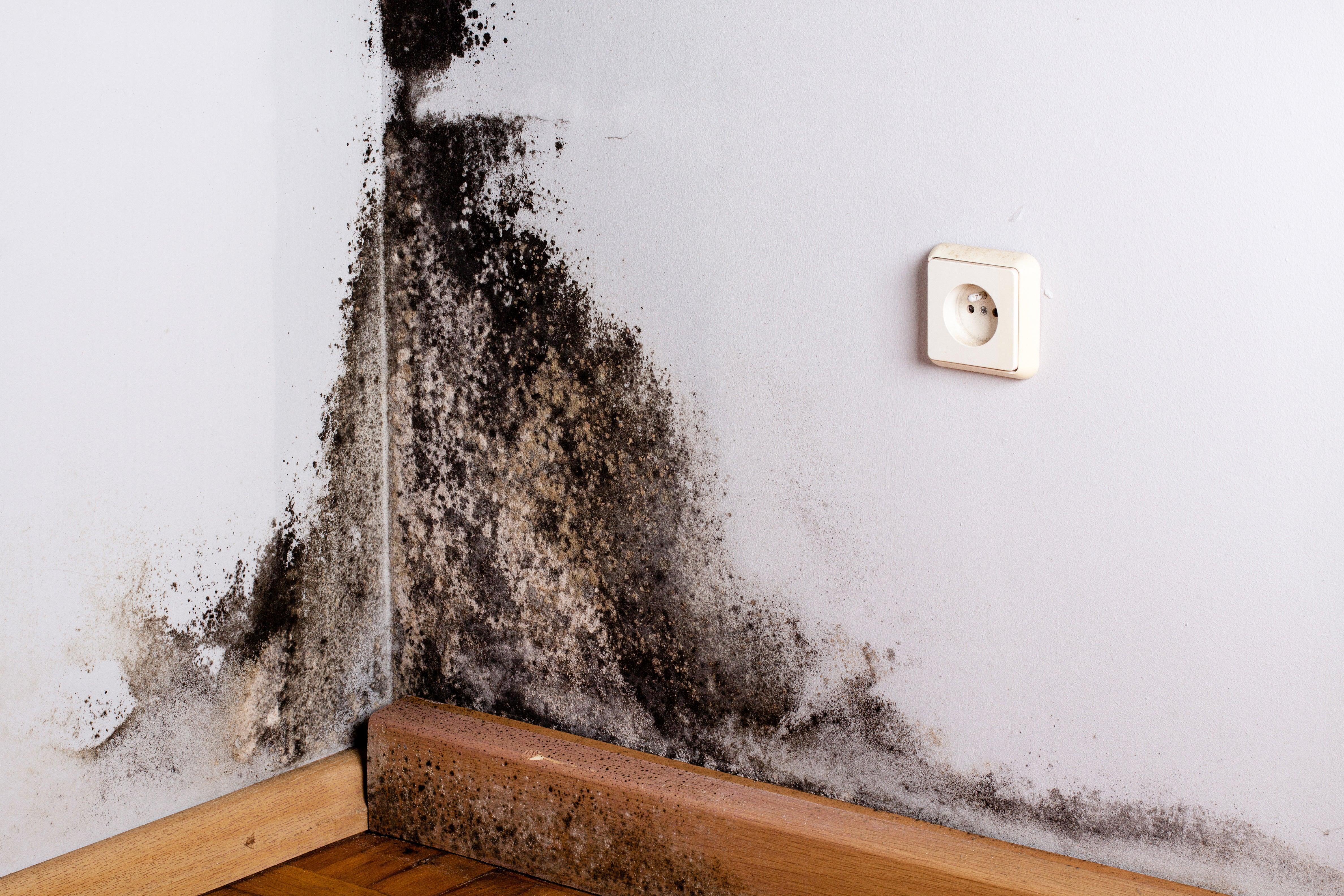The Benefits of Drying Clothes with a Senelux Dehumidifier
Are you looking for a cost-effective and eco-friendly alternative to tumble dryers? Look no further than Senelux dehumidifiers. These devices not only dry your clothes but also provide a myriad of additional benefits for your home.
Several advantages come with using a dehumidifier instead of a tumble dryer for drying laundry. The most notable of these benefits is a substantial reduction in cost. A dehumidifier can cost as little as 8p an hour to run, in stark contrast to a tumble dryer that can set you back over £2 per cycle*.
Therefore, every time you opt to air dry your load rather than employing a tumble dryer, you're economising roughly £1.50 on your electricity bill. For households that do laundry daily, this could result in savings of up to £45 each month!
Let's take a closer look.
Understanding the Senelux Dehumidifier
A common question is how Senelux dehumidifiers work to dry your clothes without employing the same high-intensity heat and motion of a tumble dryer. It's quite simple. A Senelux dehumidifier takes in moisture-laden air from the room, cools it rapidly to condense the water vapour, and then reheats it, reducing the overall humidity.
Senelux dehumidifiers absorb the moisture in the air from your damp clothes, and emits warm, drier air that gradually dries out your clothes to the same effect a tumble dryer would, albeit over a more extended period.
Benefits of Using a Senelux Dehumidifier for Drying Clothes
- Lower Costs Over Time
While the upfront cost of a Senelux dehumidifier may be higher than a typical tumble dryer, the running costs are substantially lower. An average tumble dryer costs 0.39€ / £0.33 per hour in terms of energy consumption. In comparison, the operational costs of a Senelux dehumidifier can be as little as 0.03€ / £0.03 per hour – approximately 12 times less expensive to run. This means a significant saving on your electricity bills over time.
These devices can extract up to 12 litres of moisture per day and operate at a mere 0.157 kWh. In contrast, an average tumble dryer uses about 4.5 kWh per cycle.
When you translate this into costs, using the October 2022 price of 34p per kWh as a benchmark, you can clearly see the stark differences in energy consumption. This not only reflects on your energy bill but also has a significant environmental impact.
- Environmentally Friendly
Switching to a Senelux dehumidifier shows your commitment to the environment. With its lower energy consumption, it significantly reduces carbon emissions compared to a conventional tumble dryer.
- Reusing Retained Heat
Senelux dehumidifiers generate a considerable amount of heat that doesn't just aid in drying your clothes but can be harnessed to warm other parts of your home. This additional heat can also speed up the heating of areas in more humid settings, reducing your reliance on traditional heating methods.
- Protection from Condensation and Mould
Drying clothes on radiators can increase relative humidity, leading to condensation, dampness, and the potential for mould formation. This could damage your home's structural integrity and may pose health risks. By reducing overall humidity, a Senelux dehumidifier greatly reduces the risk of damp and mould forming.
- Less Damaging to Clothes
Unlike tumble dryers that can damage or shrink fabrics due to mechanical wear or high temperatures, Senelux dehumidifiers are much kinder to your clothes. This can significantly extend their wearability.
6.Comparing Senelux Dehumidifiers with Other Household Appliances
In comparison to larger appliances like air conditioners or heaters, running a dehumidifier consumes less energy. The energy-efficient models offered by Senelux make them remarkably cost-effective, especially when compared with other common household gadgets.
Here's a comparison of energy consumption:
Senelux Dehumidifiers:
- Average consumption: 21-158 watts
- Kilowatt-hours (kWh) per hour: 0.1 - 0.8 kWh
- Senelux X600B, 500ml dehumidifier (21W) - 0.021 kWh
- Senelux T8+, 750ml dehumidifier (40W) - 0.04 kWh
- Senelux Virgo, 12l dehumidifier (158W) - 0.158 kWh Note: Most users operate the device on lower settings, resulting in significantly lower kWh consumption.
Refrigerator:
- Average consumption: 100-200 watts
- Kilowatt-hours (kWh) per hour: 0.1 - 0.2 kWh
In conclusion, understanding the factors affecting the cost of operating a Senelux dehumidifier can help you make an informed decision about maintaining optimal humidity levels in your home, all while being mindful of energy consumption and costs.
A Superior Choice
It's clear that Senelux dehumidifiers offer an efficient, safe, and cost-effective solution for drying clothes. While they may not match the speed of a tumble dryer, the benefits they provide, from reduced costs to environmental friendliness, make them an exceptional choice for modern households.
Looking for the best clothes drying dehumidifier available? Look no further than Senelux. Its reliable performance and proven results make it a top choice across Europe and Worldwide. Get in touch today to introduce a Senelux dehumidifier into your home.
Room Dynamics
-
Room Size & Sealing: Employing a dehumidifier in a smaller room (approximately 1.8m x 2.4m) has proven more effective and economical than in a larger one (approximately 3m x 3.6m). Keeping doors and windows sealed concentrates the warm, dry air, accelerating the drying process. However, it’s important to refer to the owner’s manual as some dehumidifiers specify minimum room sizes for optimal performance.
-
Temperature Considerations: A room temperature of 20°C or above is ideal for compressor dehumidifiers to operate efficiently. Though if the room is slightly cooler, the dehumidifier will gradually warm it up.
-
Avoiding Draughts: Draughty rooms can hinder the performance of the dehumidifier, so ensure all windows, doors, and vents are closed. Placing a draught excluder, such as a sausage dog or a rolled-up jumper, can further assist.
Utilising Your Dehumidifier Effectively
-
Positioning & Airflow: Position the dehumidifier close to the laundry and ensure it has a clear path of airflow. Utilising a fan to circulate air can significantly improve drying times and overall costs.
-
Manual Consultation: Familiarise yourself with the dehumidifier’s manual to maximise energy use and adhere to safety precautions. Certain models may have unique requirements or features, like ‘laundry’ mode, that can be advantageous.
-
Maintenance Checks: Regularly check the inlet filter for fluff or obstructions and utilise smart features or timers if available to monitor energy usage.
-
Optimal Drying Practices: Hang heavier, wetter items at the top and outside of the drying rack and rotate items during the drying process. Consider using smaller towels and washing them less frequently to reduce moisture levels.
-
Supplementary Equipment: Employing a heated airer alongside a dehumidifier can expedite drying, though monitoring is essential to avoid unnecessary costs. Additionally, using an energy-monitoring smart plug can help keep track of energy consumption.
Buying Tips & Recommendations
Senelux dehumidifiers, available at our e-commerce website, are perfectly suited for such tasks. If you’re contemplating purchasing a dehumidifier, carefully consider the size and type, taking into account the different conditions and requirements of your space. Desiccant dehumidifiers, for instance, perform well in colder conditions and are advantageous for dealing with general damp issues.
Conclusion
Running dehumidifiers can be cost-intensive if not utilised properly. By adhering to these research-based tips and strategies, you can significantly minimise dehumidifier cost of running and ensure an efficient drying process. Remember, smaller rooms, adequate temperature, proper sealing, and strategic usage are key to unlocking the full potential of your Senelux dehumidifier.
Don't forget, for additional tips, insights, or if you’re ready to explore the world of Senelux dehumidifiers, feel free to reach out. We invite you to submit your information on our website, and rest assured, by submitting your information you agree to be contacted with news and offers from our trusted brands. Explore our range of dehumidifiers today and say goodbye to the woes of damp and long drying times.


